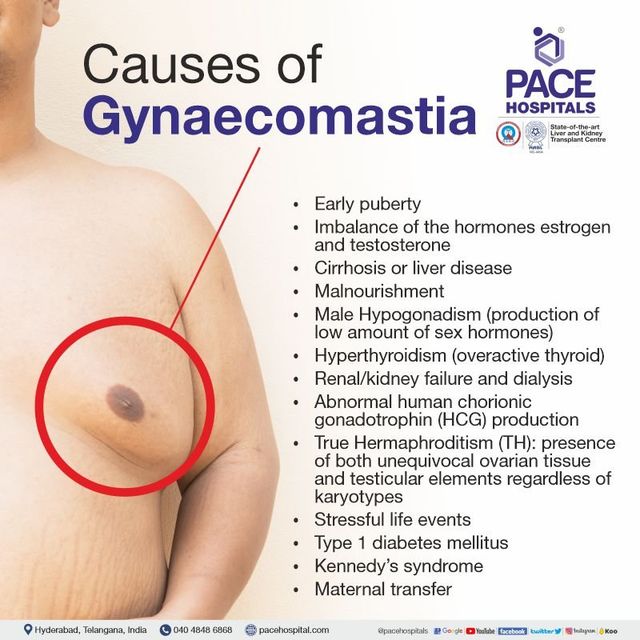Gynecomastia Body Image
by Admin
Posted on 10-12-2024 01:33 PM

What is Gynecomastia
Gynecomastia is a common condition that affects an estimated 30-60% of males at some point in their lives. It can occur during puberty, as a result of hormonal imbalances, or due to certain medical conditions or medications. The symptoms of gynecomastia can range from mild breast tenderness to significant breast enlargement, and in some cases, it can be accompanied by nipple discharge or pain.
Causes and Risk Factors
The causes of gynecomastia are diverse and can be attributed to various factors, including hormonal imbalances, genetics, and certain medical conditions. Some of the most common causes of gynecomastia include:
Hormonal Imbalances
Hormonal fluctuations during puberty, aging, or due to certain medical conditions can lead to an imbalance of estrogen and testosterone, resulting in breast tissue growth.
Genetics
Family history can play a significant role in the development of gynecomastia, as certain genetic conditions can increase the risk of breast tissue growth.
Medical Conditions
Certain medical conditions, such as hypogonadism, hyperthyroidism, and liver or kidney disease, can contribute to the development of gynecomastia.
Effects on Body Image
The emotional and psychological impact of gynecomastia on body image can be significant, leading to feelings of:
Low Self-Esteem
The enlargement of breast tissue can lead to feelings of embarrassment, shame, and low self-esteem, making it challenging for individuals to engage in social activities or intimacy.
Anxiety and Depression
The emotional distress caused by gynecomastia can contribute to anxiety and depression, further exacerbating the condition and making it more challenging to manage.
Social Withdrawal
The fear of being ridiculed or judged can lead to social withdrawal, causing individuals to avoid social interactions and intimacy, which can negatively impact their overall well-being.
Coping Mechanisms
While gynecomastia can have a profound impact on body image, there are several coping mechanisms that can help individuals manage their symptoms and improve their self-esteem. Some of these mechanisms include:
Exercise and Diet
Engaging in regular exercise and maintaining a healthy diet can help reduce body fat and improve overall health, which can, in turn, reduce the symptoms of gynecomastia.
Clothing and Fashion
Wearing loose-fitting clothing or using compression garments can help minimize the appearance of breast tissue, making it easier for individuals to feel more confident in their bodies.
Support Groups
Joining support groups or online forums can provide individuals with a sense of community and connection, allowing them to share their experiences and learn from others who are going through similar challenges.
Treatment Options
In some cases, treatment may be necessary to alleviate the symptoms of gynecomastia. Some of the most common treatment options include:
Medications
Certain medications, such as selective estrogen receptor modulators (SERMs), can help reduce breast tissue growth by blocking the effects of estrogen.
Surgery
In severe cases, surgery may be necessary to remove excess breast tissue and restore a more masculine chest contour.
Conclusion
Gynecomastia can have a profound impact on body image, leading to feelings of low self-esteem, anxiety, and depression. However, by understanding the causes and risk factors, and by using coping mechanisms and treatment options, such as Gynecomastia surgery, individuals can manage their symptoms and improve their overall well-being. It's essential to approach gynecomastia with sensitivity and compassion, recognizing the emotional and psychological impact it can have on individuals.
FAQs
What is the main cause of gynecomastia?
The main cause of gynecomastia is a hormonal imbalance, specifically an imbalance of estrogen and testosterone.
Can gynecomastia be treated with exercise and diet alone?
While exercise and diet can help reduce body fat and improve overall health, they may not be enough to completely eliminate the symptoms of gynecomastia. In some cases, medical treatment or surgery may be necessary.
Is gynecomastia a sign of a underlying medical condition?
In some cases, gynecomastia can be a sign of an underlying medical condition, such as hypogonadism or hyperthyroidism. It's essential to consult with a healthcare professional to determine the underlying cause of gynecomastia.
Can gynecomastia be prevented?
While gynecomastia cannot be completely prevented, maintaining a healthy lifestyle, avoiding certain medications, and managing underlying medical conditions can help reduce the risk of developing the condition.
Michael Law MD Aesthetic Plastic Surgery
10941 Raven Ridge Rd #101,
Raleigh, NC 27614,
919-256-0900
